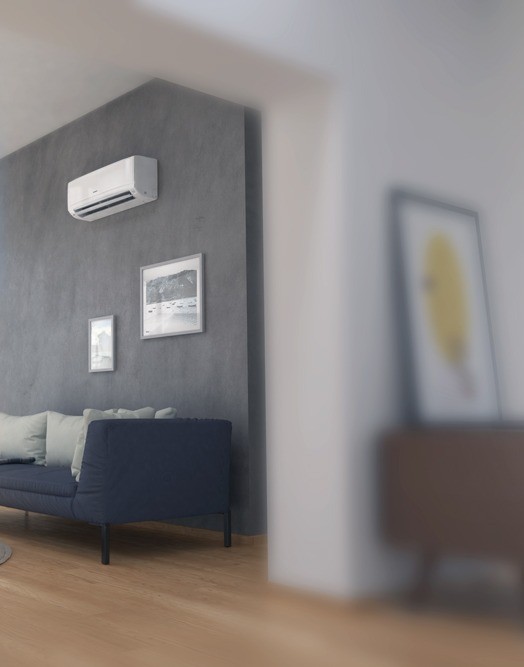–Cooling the Urban Heat Island

When you think about it, in general, cities are warm places.
It is not just about human warmth, interaction, and vibrant neighbourhoods, but actual, physical warmth; urban areas are metropolitan areas that are often two or three degrees warmer than the rural areas surrounding them.
This temperature difference, more pronounced at night when winds are calmer, is known as the 'urban heat island effect' and remains one of the clearest examples of how human activity has a direct impact on the environment around us.
The main causes of urban heat islands are rooted in four variables.
First, cities tend to have a lot more manmade surfaces that use dark materials like concrete or asphalt which have significantly different thermal properties than open land in rural areas. Roads, parking lots, sidewalks, buildings, and structures often absorb more heat during the day, making the ground warmer. Asphalt and concrete are also significantly more heat radiant, meaning that they tend to slowly release accumulated heat at night, contributing to 'close' temperatures in the home.
Second, the reflections from buildings and structures provide additional heat, creating urban canyon effects. Buildings also tend to block wind currents and breeze, reducing the amount of cooling that convection offers.
Third, emissions and pollution contribute to greenhouse effects on urban areas and, finally, additional ozone concentrations further reduce air quality and accelerate temperature increases.
Heat islands have several negative effects, both on the ecosystem where the city sits and its residents.
Higher temperatures reduce air quality and make heat waves worse, making cities, the core component of any modern society, more unpleasant and uncomfortable. They also significantly increase energy use dedicated to cooling, from our homes stores and offices, through to essential locations such as hospitals and schools.
Fortunately, there are steps that can be taken by homeowners and facility managers to minimize the impact on our homes and the places we work yet keep costs down, and urban planners and designers have several tools at their disposal to reduce heat island effects.
Keeping Cooler Without the Extra Cost
The Importance of Green Areas
The most effective solution is also one that happens to make streets significantly more pleasant: planting trees.
Tree-lined streets are a staple of many Mediterranean towns and cities, an enduring feature of many quaint plazas, public squares, and terraces. Trees are there, however, not just for aesthetics, but because they help both diffuse the sunlight and mitigate the urban canyon effects that warm-up city streets.
In 2012, the City of Melbourne developed an Urban Forest Strategy that was focused on doubling the tree canopy within their city by 2040, planting 3,000 trees each year. The program has produced measurable drops in temperature of 1 - 2ºC (33.8ºF - 35.6ºF) in the neighbourhoods affected. Tree planting and upkeep might be expensive, but recent studies show that trees more than pay for themselves. Reduced heat use, improved air quality, lower emissions, and improved quality of life for residents are only part of the equation. Tree cover helps improve stormwater management, reducing the impact of bad weather, and reduces pavement maintenance costs, as roads deteriorate slower when not subject to constant thermal expansion and contraction.
Green infrastructure goes beyond trees, however; reducing paved surfaces whenever possible is also helpful. This doesn’t mean tearing up streets and parking lots but being cleverer on how streetscapes and paved surfaces are laid. Parking lots can use non-paved surfaces whenever possible; public squares and plazas can rely on grass, trees, and native plants instead of concrete surfaces; road medians can be covered with shrubs or grass instead of asphalt. Mitigation projects can also be approached piecemeal, as an incremental effort, without requiring significant investment upfront but just a different approach to maintenance and repair practices.
Greenery is not the only option on the table, however – changing the colour of our roofs is also effective. Traditional architecture in many warm climates often includes white roofs not as an aesthetic choice, but as an integral part of the design. White, well-insulated roofs reflect heat back to the atmosphere instead of absorbing it. The result is a cooler, more energy-efficient building, for little to no cost.
Green roofs are a more sophisticated version of this idea. Instead of having tiles or concrete that absorb heat, roofs can include a layer of vegetation on them. A green roof does not just reflect heat, but actually removes heat from the air through evapotranspiration. They are more complex and expensive to maintain, however, so their benefits might only be readily apparent on large structures or buildings. The implementation of rooftop or vertical gardens within commercial and residential complexes have become more common in recent years.

Besides roofs and trees, cities can implement policies to reduce energy use. Both emissions and residual heat are the results of energy consumption, so using air conditioners, cars, fridges, lightbulbs, or appliances that are more efficient will reduce heat island effects. Cities can impact them only indirectly, but they have several effective tools at their disposal. City officials can update building codes to mandate better insulation (and white roofs).
Cities can also implement reforms to reduce the use of private vehicles and promote walking, biking, and mass transit. Cars, no matter if they are electrical or gas-powered, remain the least energy-efficient way to move people around a city, so reducing traffic will help reduce waste heat. Cars also require vast expanses of asphalt and concrete to move around, so limiting their use can free valuable urban space for more tree cover.
For any enquiries, please contact your local Hitachi Cooling & Heating specialist by using our Dealer Finder or contact us directly.
ꟷ Hitachi Cooling & Heating Australia ꟷ

















































